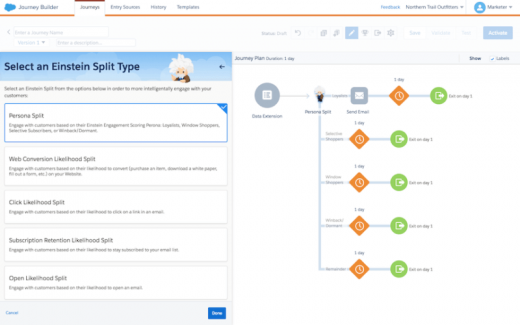Salesforce adds Interaction Studio, integration with Google Analytics 360
Other enhancements include Einstein-boosted audience segmentation and new connections between the Marketing, Commerce and Service Clouds.
Barry Levine on June 14, 2018
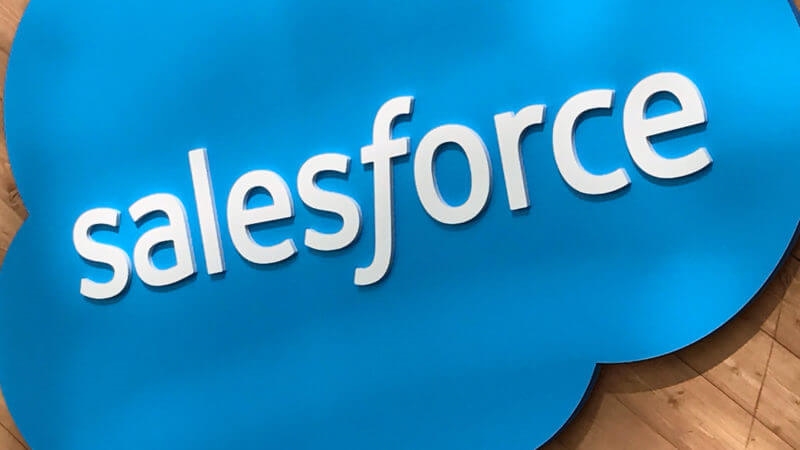
Salesforce is out today with new features for its Marketing, Commerce and Service Clouds that more tightly connect customer interactions across clouds.
Unveiled this morning at the company’s Connections event in Chicago, they include:
- A Marketing Cloud integration with Google Analytics 360, which will be available as a beta next month. Following the announcement last November of a global strategic partnership between the two companies, this is a resulting product. The integration allows marketers to create aggregated audiences in Analytics 360 and then direct campaigns toward them in Marketing Cloud. Going the other way, campaign data from Marketing Cloud can now be used inside of Analytics 360, based on responses — such as purchases — to the campaigns. Marketing Cloud Chief Strategy Officer Jon Suarez-Davis told me that this is Google Analytics 360’s first full integration with a major marketing platform, combining data from the two platforms into a single dashboard. As a result, he said, it’s the first time marketers can create audiences in 360 and then automatically activate them in an email campaign, without coding.
- The launch of a new Interaction Studio. It enables the delivery of experiences like offers across channels (such as email, social, mobile, digital ads or in-store kiosks) in response to real-time signals about what that customer(s) is doing on a brand’s properties, which updates the profile. Based on the customer’s multichannel behavior, the offer — such as a discount for shoes because a pair of shoes were placed in a shopping cart on a website but not purchased — can be made through any channel supported by the Salesforce platform, and it can be automatically coordinated with any ongoing campaigns, such as email ones. In another use case, if a customer clicks on an offer on a brand’s website and then calls the customer service center, the service rep can immediately see the action the user has taken on the site in the customer’s profile and make a follow-up offer or other response if needed. Suarez-Davis noted that this use of behavioral signals could have been employed by the Marketing Cloud previously, but only following a batch mode capture of the data. Now, it’s real-time and can include real-world interactions, such as your entry into a physical office, as soon as that entry is recorded in Salesforce’s Service Cloud.
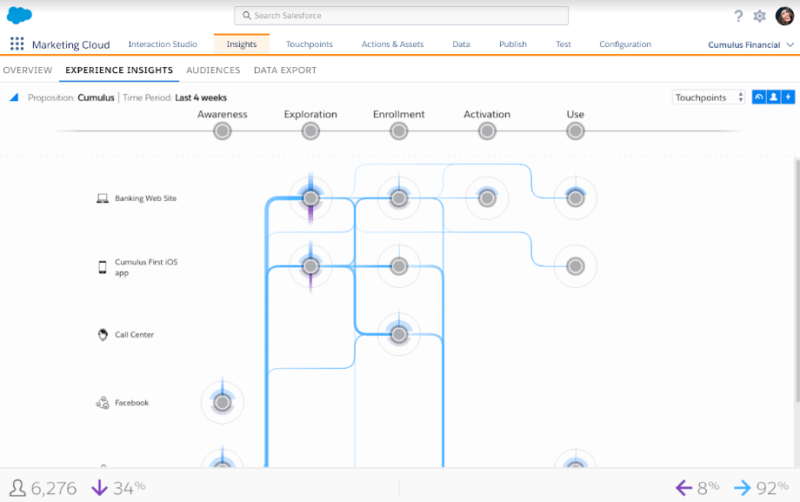
- The launch of native B2B commerce in its Commerce Cloud, which is the result of integrating its acquisition of CloudCraze, announced this past spring. Salesforce says a manufacturer can now employ this Cloud to offer consumer-like experiences to, say, third-party retailers and distributors. B2B-specific features include account management, complex pricing and custom catalogs, along with integration into Salesforce’s popular customer relationship management platform.
- Introduction of Einstein Segmentation and Einstein Splits. Einstein, not to be confused with some scientist possessing the same family name, is Salesforce’s cross-cloud layer of artificial intelligence. Its new Segmentation employs machine learning to analyze relevant data in the Salesforce data management platform and find new ways to group audience segments for targeting. Salesforce suggests the use case of an outdoor gear retailer that, in prepping a summer campaign about hiking, discovers from Einstein that it would be more effective to divide segments into more targeted groups, such as Solo Backpackers or Gadget Enthusiasts. Suarez-Davis said the marketer determines a goal, such as increased bookings, and Einstein finds the audience attributes to achieve that goal.
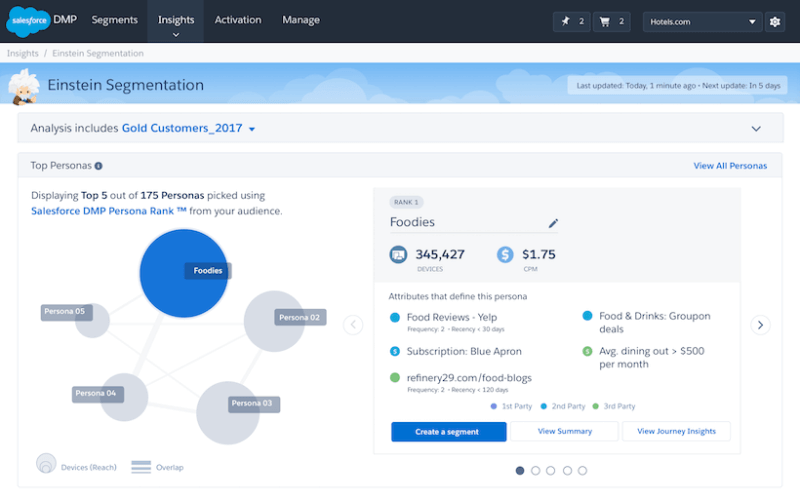 Einstein Splits now offers predictive split flow control right in Salesforce’s Journey Builder, a key tool for planning the steps to approach, appeal to, convert and keep a customer. Whereas the platform’s journeys were previously based on past patterns of behavior, Splits now includes likelihood to open, click, unsubscribe or convert according to personas like Win Back/Dormant, Selective Subscriber, Window Shopper or Loyalist. Before, Suarez-Davis noted, Journeys could offer next best options, but it was the marketer selecting the suggested offers based on past data. Now, Einstein offers predictive help. Splits enable the creation of journey paths based on what Einstein thinks is the likely response of a given customer. These different paths, such as one based on the likelihood of opening a particular email, can then be tested for the channel choice and the messaging.
Einstein Splits now offers predictive split flow control right in Salesforce’s Journey Builder, a key tool for planning the steps to approach, appeal to, convert and keep a customer. Whereas the platform’s journeys were previously based on past patterns of behavior, Splits now includes likelihood to open, click, unsubscribe or convert according to personas like Win Back/Dormant, Selective Subscriber, Window Shopper or Loyalist. Before, Suarez-Davis noted, Journeys could offer next best options, but it was the marketer selecting the suggested offers based on past data. Now, Einstein offers predictive help. Splits enable the creation of journey paths based on what Einstein thinks is the likely response of a given customer. These different paths, such as one based on the likelihood of opening a particular email, can then be tested for the channel choice and the messaging.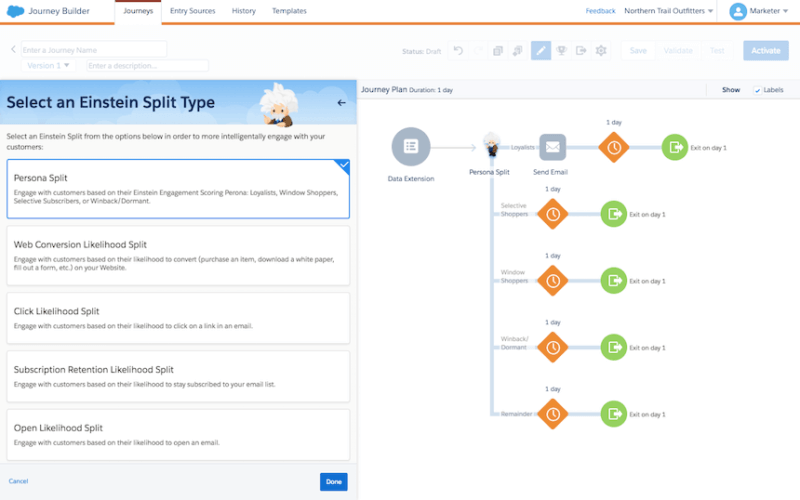
- And there are new integrations between the Marketing, Commerce and Service Clouds. Now, for instance, a customer service rep can see a customer’s order history and interactions within the service dashboard, not in a separate one.
Marketing Land – Internet Marketing News, Strategies & Tips
(44)

